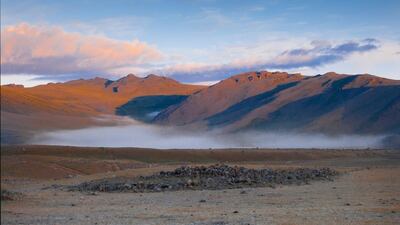Think nomad and the mind normally turns to Mongolians, Berbers, Bedouins, Roma or sea gypsies. Usually the setting is a sorry one: vulnerable, dispossessed and depleting peoples whose way of life is on the way out thanks to modernisation and the loss of land. But a new exhibition at London's British Museum, Scythians: Warriors of ancient Siberia, not only brings to life a massive but relatively forgotten chapter in human history, but suggests a new way of thinking about people on the move that is both formidable and instructive.
For the Scythians, mobility was their strength. This tribe, which flourished for around 700 years from about 900 BC until about 200 BC, mastered horsemanship and archery, inventing both the saddle and the composite bow.
Travelling at formidable speed and able to unleash torrents of metal-tipped poisoned arrows, they dominated vast swathes of land and terrified all comers, fighting off attacks from the Persians and making mincemeat of sedentary adversaries.
Yet they were also far from isolated, and had international connections from living alongside, trading and communicating with the Ancient Greeks, Persia, India and China. They also raided the Middle East and helped destroy the Assyrian Empire, culminating in the Battle of Nineveh in 612 BC, close to what is now modern-day Mosul. Thucydides, an Athenian historian, said in around 400 BC that “There is no people who would be able on its own to withstand the Scythians, if they were united.”
Though split into several distinct sub-tribes covering land all the way from the Black Sea to western China, the Scythians were all nomads. The British museum exhibition offers an insight into their way of life, which included mummification of the dead and tomb rituals reminiscent of the ancient Egyptians, and large quantities of striking gold jewellery and ornamentation illustrate their success.
But what is even more interesting is the realisation that settled people viewed nomads with both fear and admiration. While modern-day refugees may not choose their lifestyle and are widely feared, the worldwide efforts to harness their abilities in business startup bootcamps signal a new, more positive way of looking at them. Throughout history, people have always moved; in fact, it can be argued that moving is what makes us human.
Through momentum and skill, the Scythians were masters of the technology of their age. Today’s digital nomads, who value experiences over fixed assets (though are as keen as any of us on that most mobile of currencies, cash), have done the same. They embrace the sharing economy, pack up their life in a small backpack, working off Wi-Fi networks in remote offices, living in Airbnbs and finding work and thus food wherever it is. Inevitably, they find they are rewarded with yet more mobility – the freedom to work from anywhere. Howls of jealousy ring out from the enslaved sedentary masses, who sit at their desks and didn’t realise this was possible. Yet again, the nomads are ahead.
Scythians: warriors of ancient Siberia runs at the British Museum until January 14 2018.

